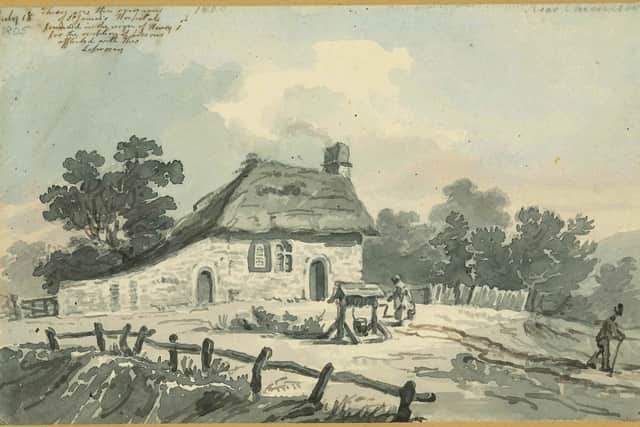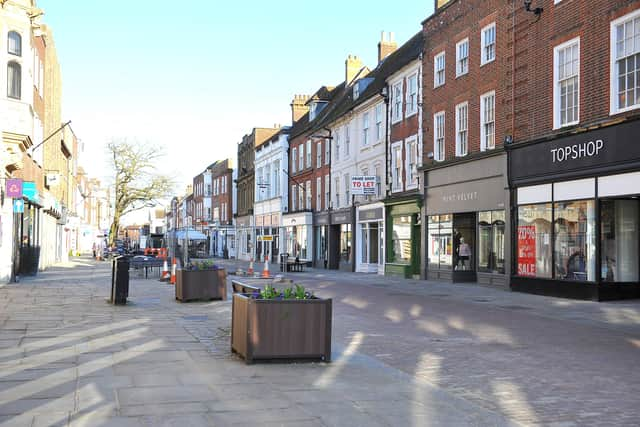Chichester and its long history of weathering plagues and diseases
and live on Freeview channel 276
This is not the only time, however, that our ancestors have had to face such a challenge. In this article, we explore some of the most prominent examples of infectious diseases throughout later history.
Bubonic plague, also known as the Black Death, is an infectious bacterial disease caused by Yersinia pestis. Bubonic plague still exists in many countries, especially Madagascar, the Democratic Republic of Congo and Peru.
Advertisement
Hide AdAdvertisement
Hide AdIn August 1665, a chest arrived in the Derbyshire village of Eyam from London. The chest contained cloth and within the cloth were fleas, carrying the plague.


George Viccars, a tailor’s assistant, hung the cloth in front of the hearth to dry, releasing the fleas. He was the first in the village to succumb to the disease and 42 villagers died between September and December 1665.
Many prepared to leave to save their lives. William Mompesson, rector, prevented this, believing that the village should be quarantined, to protect neighbouring towns and villages. On June 24, 1666, Mompesson told his parishioners that the village must be enclosed, with no one allowed in, or out, including himself. The villagers reluctantly agreed. In all, 260 people died in Eyam, the last on November 1, 1666.
Over 300 years later, the story of Eyam is well known. What is less well known is that Chichester experienced a similar course of events during the year of 1664.


Advertisement
Hide AdAdvertisement
Hide AdThe plague was introduced into Chichester by a traveller from London. As the number of cases increased, the mayor decreed that whenever a death occurred, the house should be locked up and the door painted with the doleful words ‘Lord have mercy upon us’.
When this failed to stop the infection, the mayor decided to have the city gates locked and the inhabitants resolved to stay within the walls until the plague was over. This was successful in containing the plague until stocks of food began to run out.
Notices were posted on the gates in the hope that someone would read about the appalling state of affairs. A cowherd from Bosham read the notice on West Gate and promised to return, which he did with several carts laden with meat and vegetables.
To prevent infection, the provisions were laid out with the prices marked. The people of Bosham retired while the people of Chichester came and inspected the goods. Money was placed in a bucket of water. Day after day the people of Bosham returned with provisions until the plague was over.
Advertisement
Hide AdAdvertisement
Hide AdDue to this thoughtful act, they were subsequently granted the right to sell items in the market in Chichester without paying a licence.
As the plague declined, in the 17th century, smallpox, caused by a virus called Variola, led to outbreaks spreading across Europe. In response to this threat, so-called Pest Houses (from the Latin Pestis meaning plague) were introduced where victims could be isolated.
There was once a Pest House in College Lane, Chichester, opened in 1665. St James’ Hospital, originally a leprosy hospital was another. Pest Houses were replaced in the 20th century by Infectious Diseases Hospitals. In Chichester, there was one in Bishops Gate Walk, near to St Richard’s Hospital. The world was declared free of smallpox in 1980, by virtue of an effective vaccine, first discovered by Edward Jenner in 1796.
Cholera, an infectious disease caused by the bacterium Vibrio cholerae, first entered the UK in 1831, through the port of Sunderland, arriving in Chichester shortly afterwards.
Advertisement
Hide AdAdvertisement
Hide AdDuring an outbreak in 1848-1849, Dr John Snow, a GP working in Soho, London, plotted the sites of all the deaths from cholera on a map of his practice. At the centre of the cluster of deaths was a pump in Broad Street, used to supply water to the Golden Square area. Dr Snow asked for the handle of the pump to be removed and the outbreak promptly ceased, confirming that cholera was spread by contaminated water.
In the 19th century, Chichester had its equivalent to the Broad Street pump, the River Lavant. The neighbouring houses, without mains drainage, used the river as a convenient sewer.
To try to rectify the problem all but two dwellings were connected to cesspools rather than being directly fed into the Lavant. In 1865, the Lavant was still being reported as the main sewer. In 1874 the city was finally provided with a water supply but the debate about the need for sewers continued.
The citizens who advocated mains drainage were known as drainers and the opponents anti-drainers. The city’s drainers produced startling statistics comparing incidences of typhoid, caused by Salmonella typhi infection, in Chichester with other areas of the district.
Advertisement
Hide AdAdvertisement
Hide AdOver a period of eight years, all 20 districts had a lower rate of typhoid than that experienced in Chichester. Chichester was found to be among the very worst towns for cases of typhoid and consumption across the entire country in the period 1871 to 1880. By 1896, half of the city’s houses had finally been connected to mains drainage. Despite this, a typhoid outbreak still occurred in 1897 and 1898.
Chichester has a long history of weathering plagues. The coronavirus pandemic is the worst in living memory. It has proven that the policy of isolation, social distancing and closure of schools, first used against plague in Chichester and Eyam more thanw 350 years ago, is still effective in pandemics.
Advice from Nicholas de Burgo, during the 14th century plague pandemic, that people ‘take care to be joyful... listen to lullabies, stories and melodies’ still resonates today.
For the latest breaking news where you live in Sussex, follow us on Twitter @Sussex_World and like us on Facebook @SussexWorldUK
